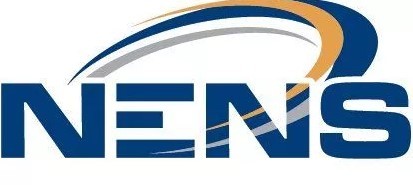Managed IT Services Provider in Lowell Shares Insights on Proactive Threat Detection with MDR
Lowell, United States - October 8, 2025 / New England Network Solutions - Lowell Managed IT Services /
Lowell MSP Explains How Arctic Wolf MDR Strengthens Cybersecurity
As organizations continue to advance digitally, they face increasingly complex cybersecurity threats. These challenges are compounded by evolving regulatory requirements, making compliance more demanding and dynamic. Establishing a robust cybersecurity posture is essential to addressing these issues effectively.
To meet these challenges, solutions have evolved in both sophistication and accessibility. Arctic Wolf’s managed detection and response (MDR) stands out as a premier option, offering 24/7 monitoring and expert guidance to strengthen your security operations.
By integrating MDR with NENS proactive threat detection and compliance best practices, your organization can enhance its ability to identify, mitigate, and prevent cyber threats—protecting business continuity and ensuring regulatory alignment.
In this post, a Lowell managed IT services provider explains how Arctic Wolf Managed Detection and Response (MDR) helps businesses strengthen cybersecurity and maintain compliance in today’s evolving threat landscape.
What Is Arctic Wolf MDR?
Arctic Wolf MDR is a cybersecurity solution designed to monitor networks, endpoints, and cloud environments. The platform offers more than basic cybersecurity software. When you partner with NENS, this service is enhanced with a Concierge Security Team, giving you superior insight into security threats.
Cyber attacks are growing in frequency and sophistication. MDR helps you find threats faster, respond appropriately, and reduce dwell time (the time between a threat entering your system and being discovered).
What is Managed Detection and Response (MDR)?
Managed detection and response (MDR) is a cybersecurity service that provides organizations with 24/7 threat monitoring, detection, and response capabilities, delivered by a third-party team of security experts.
MDR is most effective when paired with threat hunting, where cybersecurity resources actively search for malicious and/or suspicious activity within assets.
Think of your cybersecurity like a modern vehicle.
When something’s wrong, your car doesn’t just break down without warning. Instead, it gives you alerts: a check engine light, a brake warning, or a low tire pressure signal. These early warnings give you time to respond before a small issue turns into a costly breakdown.
Now imagine a vehicle that not only warns you, but also comes with a concierge mechanic who monitors it in real time, interprets those alerts for you, and takes action before you’re stranded on the side of the road.
That’s the value of managed detection and response. With Arctic Wolf’s offering, you don’t just get alerts — you’ll have access to guidance, context, and rapid response.
Regarding applying proactive threat detection, analysts use historical data, machine learning, and threat intelligence to find signs of compromise that traditional defense methods often miss. This allows your business to stay one step ahead of attackers by neutralizing threats before they cause harm.
Proactive Threat Detection vs. MDR
Proactive threat detection and MDR are complementary strategies, but they’re not the same.
Proactive threat detection is the process of actively scanning your digital environment to find vulnerabilities, suspicious behaviors, or misconfigurations before an attacker exploits them. It includes tools like vulnerability scanning, behavioral analytics, threat intelligence, and anomaly detection. It’s about being one step ahead and eliminating weaknesses before they turn into real threats.
MDR, on the other hand, focuses on identifying, investigating, and responding to real-time security threats that have made it into your environment. It acts as a 24/7 virtual security operations center (SOC), staffed by experts who analyze alerts, validate incidents, and take action.
Together, these approaches create a layered defense strategy. Proactive threat detection minimizes risk exposure, while MDR ensures you’re ready to act the moment something dangerous is detected.
How Managed Detection and Response Works
Threat detection depends on a structured process to achieve the best results. That structure can be broken into the following categories:
| Triggers | The suspicious events or occurrences that prompt an investigation. |
| Investigation | Analysts look at logs and activity to confirm threats. |
| Resolution | When threats are found, the response team follows an incident response plan to address the problem. |
| Analysis | Security experts look at historical and real-time data to tweak the detection rules and alerts. |
| Searching for Indicators of Compromise (IoCs) | Analysts look for artifacts in your systems related to known attack patterns. |
| Clustering and Grouping | Statistical methods help spot trends, allowing experts to make better rules and expedite investigations. |
Benefits of Managed Detection and Response
As managed threat detection elevates your security approach, you can expect specific benefits on strategic and operational levels:
- Rapid Detection and Response: Automated monitoring can find threats quickly, mitigating damage and containing issues faster.
- Cost-Efficiency: Automation catches threats with less labor. Meanwhile, early detection dramatically reduces costs associated with breach remediation, such as legal fees and brand damage.
- Faster Alerts: Speed is everything in threat detection. Proactive hunting typically finds dangerous activity earlier than passive or responsive systems.
Layering your defenses, including proactive threat detection, ensures a more resilient security posture.
Applying Cybersecurity to Meet Compliance
Defending your systems from malicious activity is essential, and it also forms the foundation of compliance. Regulatory requirements demand that businesses demonstrate how they protect data, systems, and users.
In many cases, the same tools and practices used to combat cyber threats—such as MDR, threat detection, and incident response—are the very measures compliance frameworks call for. By advancing your cybersecurity approach, you can stay ahead of evolving compliance requirements:
- Data privacy regulations (HIPAA, GDPR, US Privacy Act)
- Workplace health and safety standards
- Environmental sustainability mandates
- Financial reporting obligations (SEC, FDA, etc.)
- Fiduciary responsibilities for leaders
How Arctic Wolf MDR Aligns Cybersecurity with Compliance
Arctic Wolf MDR helps align cybersecurity with compliance by providing:
- Continuous monitoring & logging of systems, network, access, and configurations.
- Secure, long-term log storage to meet audit‑trail requirements.
- Automated, customized reporting aligned to HIPAA, PCI‑DSS, and more.
- Vulnerability scanning & risk assessments to meet technical control mandates.
- Expert guidance and context for audit prep and policy implementation.
These capabilities support technical requirements found in most major compliance frameworks, because effective cybersecurity is the safeguard. Arctic Wolf MDR not only helps you pass audits, but it also ensures your defenses are working around the clock.
Top Cybersecurity Compliance Risks
Here are some top cybersecurity compliance risks that NENS and Arctic Wolf MDR can help solve:
- Improper Data Storage Practices: storing sensitive employee or customer data in locations that violate local data residency laws or lack adequate encryption and access controls.
- Inconsistent Access Management: failing to enforce least-privilege principles across global teams, leading to over-permissioned accounts and increased risk of insider threats or accidental breaches.
- Lack of Endpoint Security Oversight: allowing remote or international workers to use personal or unmonitored devices without proper endpoint protection, increasing exposure to malware and unauthorized access.
Penalties in any of these categories range in type and scope:
- Fines and Legal Action: Oversight agencies can impose fines and file lawsuits.
- Business Disruption: You can lose business licenses or permits and have your operations forcefully suspended.
- Loss of Benefits: Companies can lose access to tax incentives, credits, and government contracts.
Some compliance risks not mentioned above may seem administrative, but many general compliance issues originate from poor data controls, weak system oversight, or lack of visibility—issues best addressed through the same cybersecurity tools that power your threat response strategy.
Ready to Elevate Your Cybersecurity and Compliance with a Trusted Lowell MSP?
Whether you’re looking to strengthen your cybersecurity posture, assist with ongoing compliance, or explore how Arctic Wolf MDR fits into your environment, NENS has a partnership option for you.
Contact a trusted managed services provider in Lowell today to get started!

Contact Information:
New England Network Solutions - Lowell Managed IT Services
11 Kearney Square
Lowell, MA 01852
United States
Michael Kourkoulakos
(855) 918-2126
https://www.nens.com/
Original Source: https://www.nens.com/arctic-wolf-mdr/


